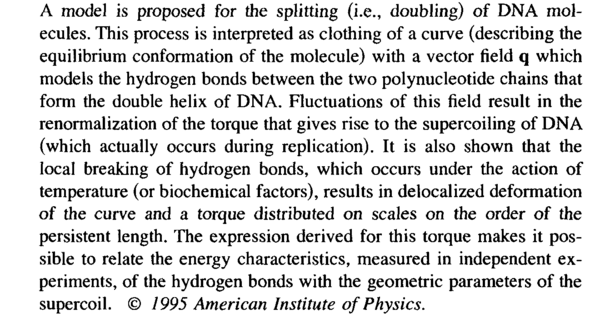|
|

| VOLUME 62 (1995) | ISSUE 7 |
PAGE 627
|
Model of the splitting of DNA molecules
Golo V. L. , Kats E. I.
A model is proposed for the splitting (i.e., doubling) of DNA molecules. This process is interpreted as clothing of a curve (describing the equilibrium conformation of the molecule) with a vector field q which models the hydrogen bonds between the two polynucleotide chains that form the double helix of DNA. Fluctuations of this field result in the renormalization of the torque that gives rise to the supercoiling of DNA (which actually occurs during replication). It is also shown that the local breaking of hydrogen bonds, which occurs under the action of temperature (or biochemical factors), results in delocalized deformation of the curve and a torque distributed on scales on the order of the persistent length. The expression derived for this torque makes it possible to relate the energy characteristics, measured in independent experiments, of the hydrogen bonds with the geometric parameters of the supercoil. © 1995 American Institute of Physics.
|
|


